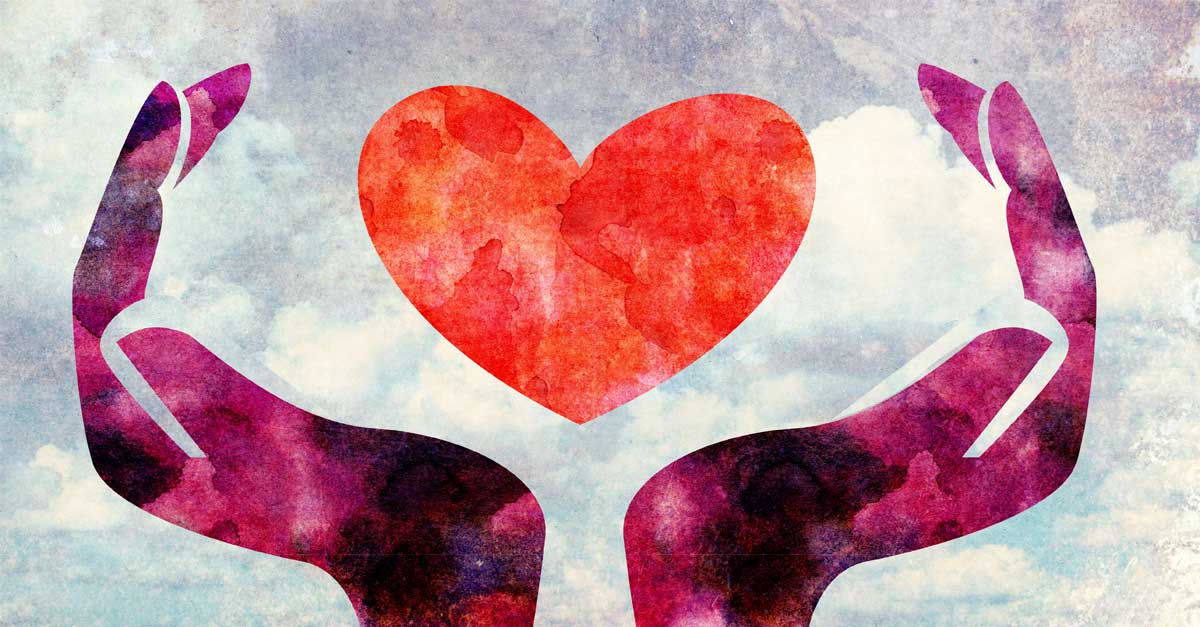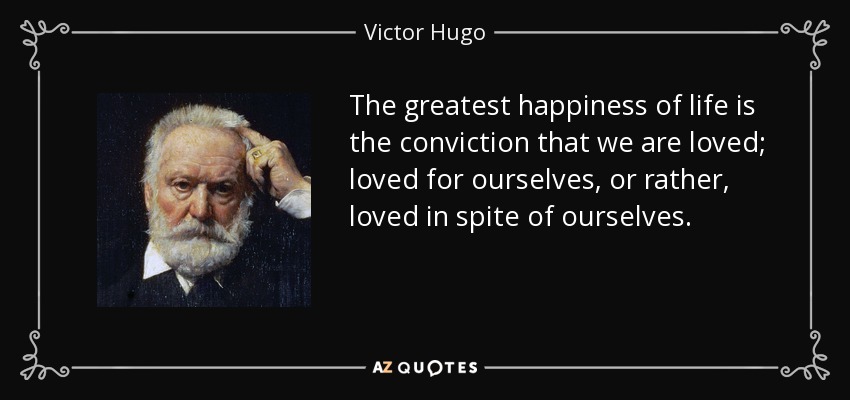…and be loved

Capacity to Love and Be Loved: Valuing close relations with others, in particular those in which sharing and caring are reciprocated; being close to people. Personified for example by Romeo and Juliet (Source: VIA Institute on Character)
The Noel Strengths Academy defines it this way:
- Includes the capacity to love
- Also includes the capacity to receive love
- Values close relationships with others
- Especially appreciates when others are reciprocal in sharing and caring
- Comfortable expressing affection in words, deeds, and touch

- Underuse: Emotional Isolation
- Overuse: Emotional Promiscuity
Key Research:
- Rank order of Love in populations from:
- US : 7;
- European: 6
- Asia: 6
- Latin America: 7
- Sub-Saharan Africa: 6
- Middle east: 6
- In a study of character strengths and adolescent peer relationships, the strengths deemed most desirable/important in a friend were honesty, humor, kindness, and fairness, and those most connected with higher peer acceptance were perspective, love, kindness, social intelligence, teamwork, leadership, and humor (Wagner, 2018).
- The most prevalent character strengths in very young children are love, kindness, creativity, curiosity, and humor (Park & Peterson, 2006a).
- In a study of character strengths and adolescent peer relationships, the strengths deemed most desirable/important in a friend were honesty, humor, kindness, and fairness, and those most connected with higher peer acceptance were perspective, love, kindness, social intelligence, teamwork, leadership, and humor (Wagner, 2018).
Psychological Impacts of Love:
- Love is a key predictor of relationship satisfaction: Research has shown that individuals with high levels of Love tend to experience higher levels of relationship satisfaction and have stronger, more fulfilling relationships (Peterson & Seligman, 2004).
- Love is linked to emotional intelligence: Love is associated with high levels of emotional intelligence, which is essential for effective relationships and decision-making (Goleman, 1995).
- Love is a key component of attachment style: Love is a key component of attachment style, which is the way in which individuals form and maintain relationships (Bowlby, 1969).
- Love is associated with a sense of belonging: Individuals with high levels of Love tend to feel a strong sense of belonging and connection to others (Lyubomirsky et al., 2005).
- Love is linked to prosocial behavior: Love is associated with prosocial behavior, such as volunteering, donating to charity, and helping others in need (Lyubomirsky et al., 2005).
- Love is a key strength for individuals in romantic relationships: Love is essential for individuals in romantic relationships, as it helps to build and maintain a strong, healthy relationship (Gilliland & Dunn, 2003).
- Love is associated with a sense of purpose: Love is associated with a sense of purpose, which is the feeling that one’s relationships and activities are meaningful and contribute to a larger goal (Seligman et al., 2005).
- Love is linked to forgiveness: Love is associated with forgiveness, which is the ability to let go of negative emotions and move forward in relationships (Enright & Fitzgibbons, 2015).
- Love is a key strength for individuals who value intimacy: Love is essential for individuals who value intimacy and closeness in their relationships (Reis & Shaver, 1988).
- Love can be developed and strengthened: Research has shown that Love can be developed and strengthened through practice, such as engaging in acts of kindness, practicing empathy, and cultivating a sense of gratitude (Seligman et al., 2005).
Tayyab Rashid and Afroze Anjum offer 340 Ways to Use VIA Character Strengths including these four for Love:
- Engage in a favorite activity together, such as hiking, going to an amusement park, biking, walking in the park, swimming, camping, or jogging. If you can’t think of a mutual favorite activity, pick one to try together.
- If you want to help your loved ones, first consider their strengths. Design your help around their strengths.
- Tape record your parent’s earliest recollections and share them with your children. Help your family record their cherished memories in a similar manner.
- Make a family blessing journal in which everyone writes good things that happen to them daily. One night a week, read aloud some of the best things from the previous seven days.
Learn more about Love
Daniel Goleman, author of “Emotional Intelligence,” asks why we aren’t more compassionate more of the time.
Why do we crave love so much, even to the point that we would die for it? To learn more about our very real, very physical need for romantic love, Helen Fisher and her research team took MRIs of people in love — and people who had just been dumped.
In love, we fall. We’re struck, we’re crushed, we swoon. We burn with passion. Love makes us crazy and makes us sick. Our hearts ache, and then they break. Talking about love in this way fundamentally shapes how we experience it, says writer Mandy Len Catron. In this talk for anyone who’s ever felt crazy in love, Catron highlights a different metaphor for love that may help us find more joy — and less suffering — in it.

Love 2.0 by Barbara Fredrickson. Here is a wonderful article to get you started.
Positivity: Top-Notch Research Reveals the 3-to-1 Ratio That Will Change Your Life by Barbara Fredrickson
 Gary Chapman conceived of a a variety of ways people express and experience love. Discover your Love Language using this self assessment. Check out one of his books
Gary Chapman conceived of a a variety of ways people express and experience love. Discover your Love Language using this self assessment. Check out one of his books
- The 5 Love Languages: The Secret to Love that Lasts by Gary Chapman
- The 5 Love Languages of Children: The Secret to Loving Children Effectively by Gary Chapman and Ross Campbell
- The 5 Languages of Appreciation in the Workplace: Empowering Organizations by Encouraging People by Gary Chapman and Paul White

Podcasts to feed your Love
- Podcast: “On Being with Krista Tippett” Episode: “The Physics of Vulnerability with Brené Brown” – Brené Brown explores the power of love, vulnerability, and connection, providing valuable insights into building meaningful relationships and fostering love in various aspects of life.
- “In Defense of Love” – The Ezra Klein Show Summary: Klein examines the philosophy, psychology and role of love in human flourishing with guests like Barbara Fredrickson. URL: https://www.nytimes.com/2022/02/17/opinion/ezra-klein-podcast-barbara-fredrickson.html
- “All About Love” – Unlocking Us with Brené Brown Summary: Brené Brown discusses her research on the different ingredients and forms of love. URL: https://brenebrown.com/podcast/all-about-love/
- “The Science of Love” – Hidden Brain (NPR) Summary: This episode explores the neurological underpinnings and evolution of human love. URL: https://www.npr.org/2018/01/15/577805533/the-science-of-love
- “The Love Episode” – The Psychology Podcast Summary: A wide-ranging discussion covering romantic love, self-love, love languages and more. URL: https://scottbarrykaufman.com/podcast/the-love-episode/
- “Lovingkindness Meditation” – The Science of Happiness (UC Berkeley) Summary: How the Buddhist practice of metta can help cultivate a loving attitude toward all. URL: https://ggsc.berkeley.edu/podcasts/story/lovingkindness_meditation
- Unlocking Us Archives – Brené Brown
- The Atlas Podcasts – Brené Brown
- 5 Love Language podcasts
 Meditation for Love
Meditation for Love
- Bringing Kindness to Yourself @ Insight Timer
- Kindness to Self Using the Breath @ Insight Timer
- Loving Kindness with Meg Levie @ SIYLI
- Loving-Kindness Meditation @ Greater Good
- A Loving-Kindness Meditation to Boost Compassion @ Mindful
Read more on meditation and kindness:
- Does Mindfulness Meditation Really Make You Kinder?
- Why Loving-Kindness Takes Time: includes a 45 minute guided meditation by Sharon Salzberg
- 18 Science-Based Reasons to Try Loving-Kindness Meditation Today!

Quotations on Love









